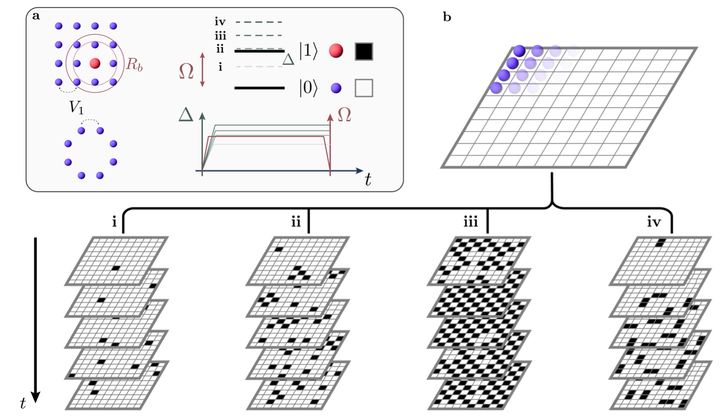Probing emergent prethermal dynamics and resonant melting on a programmable quantum simulator
 The emergence of distinct dynamical regimes in neutral atom quench experiments.
The emergence of distinct dynamical regimes in neutral atom quench experiments.
Abstract
The dynamics of isolated quantum systems following a sudden quench plays a central role in many areas of material science, high-energy physics, and quantum chemistry. Featuring complex phenomena with implications for thermalization, non-equilibrium phase transitions, and Floquet phase engineering, such far-from-equilibrium quantum dynamics is challenging to study numerically, in particular, in high-dimensional systems. Here, we use a programmable neutral atom quantum simulator to systematically explore quench dynamics in spin models with up to 180 qubits. By initializing the system in a product state and performing quenches across a broad parameter space, we discover several stable, qualitatively distinct dynamical regimes. We trace their robustness to Floquet-like prethermal steady states that are stabilized over long emergent timescales by strong dynamical constraints. In addition, we observe sharp peaks in the dynamical response that are quantitatively explained by the structured melting of prethermalization through resonances. In two dimensions, we uncover a sharp dynamical response change that converges with increased system size, that is linked to the proliferation of Néel-order defects and indicative of a dynamical phase transition with no equilibrium analogs. Uncovering an intricate interplay between quantum prethermalization and emergent dynamical phases, our results demonstrate the use of quantum simulators for revealing complex non-equilibrium quantum many-body phenomena.